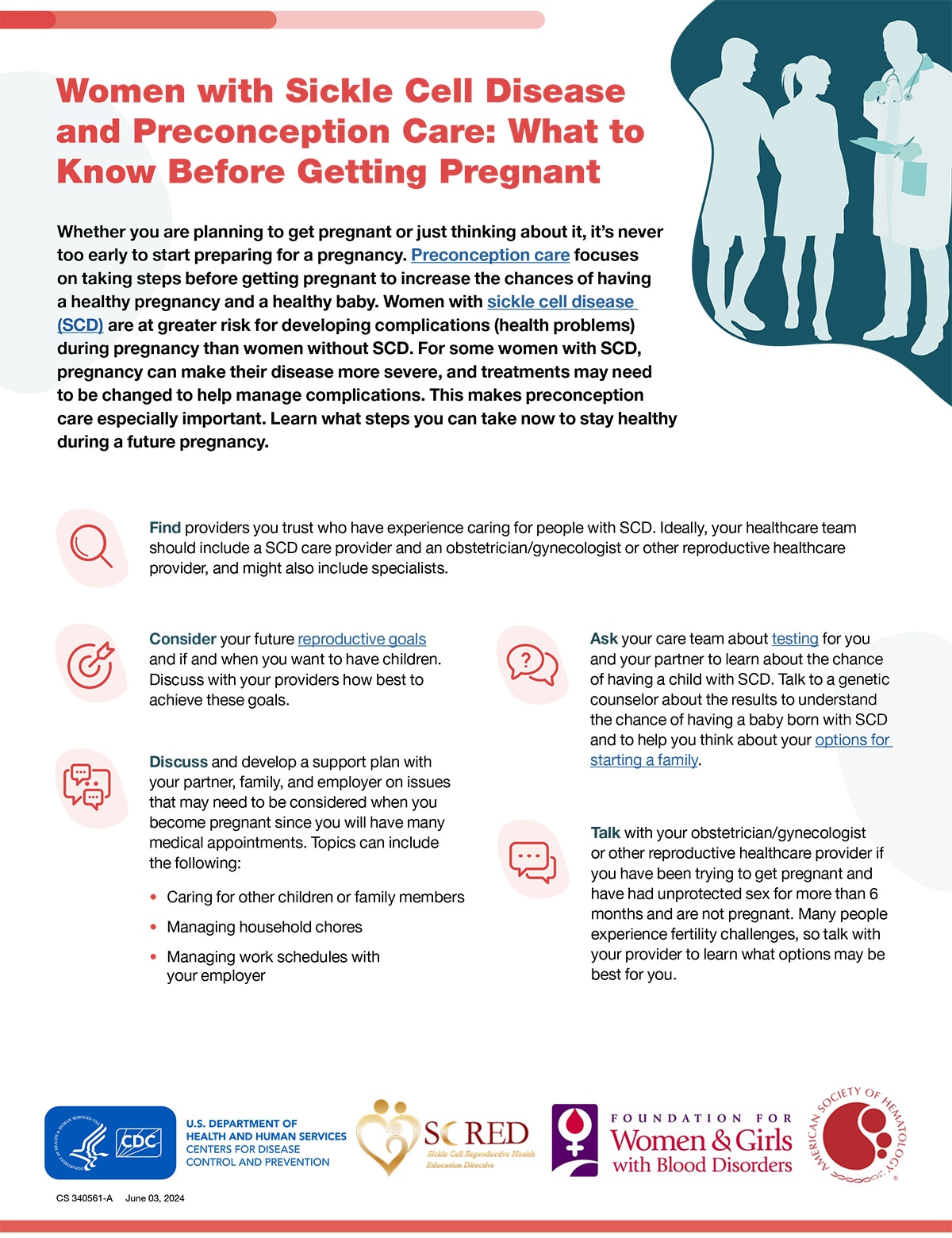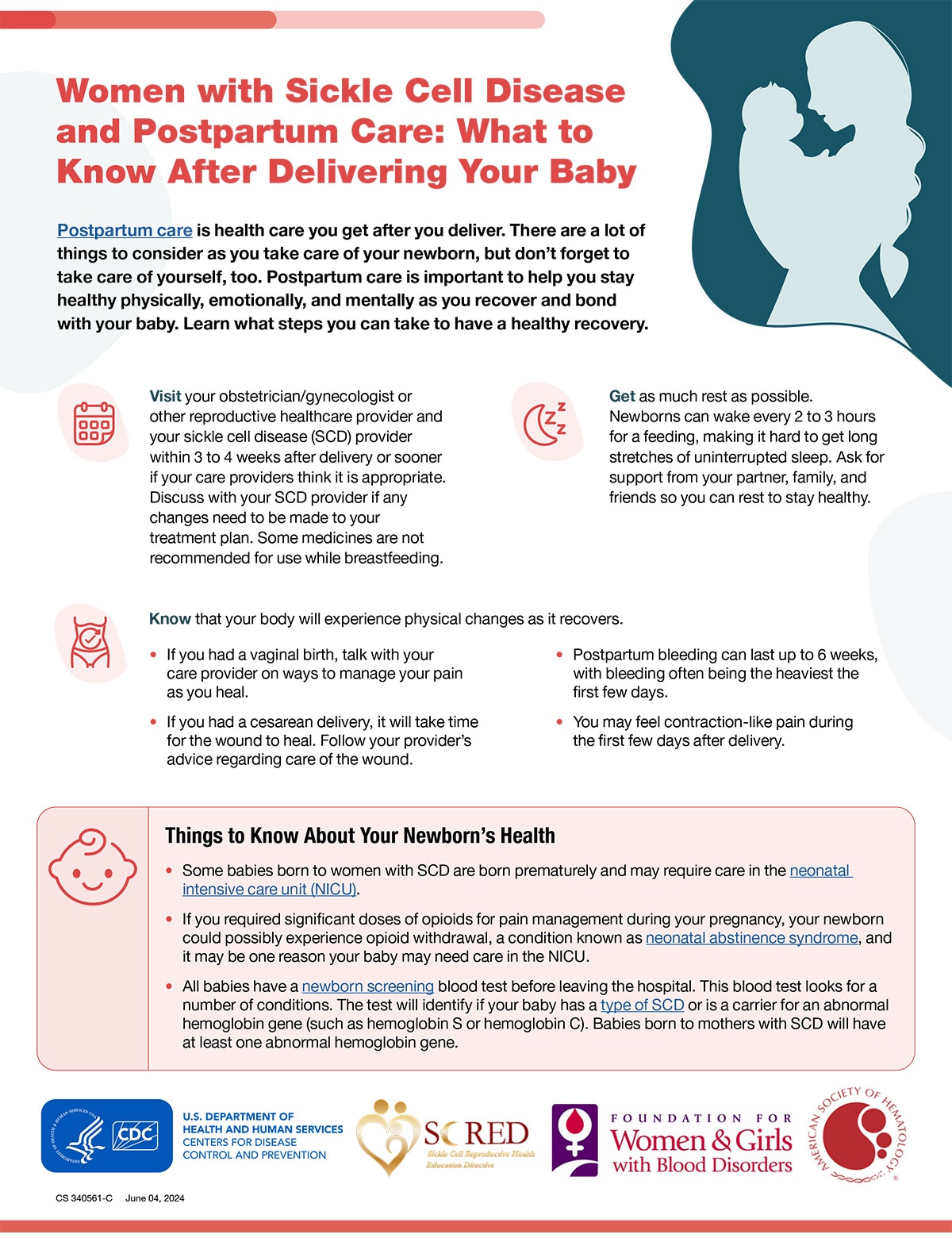What to know
CDC’s scientists collect health information about people with sickle cell disease (SCD) to study long-term trends in diagnosis, treatment, and healthcare access for people with SCD in the United States. This information can be used to improve medical treatments to extend and improve the lives of people with SCD. This World Sickle Cell Day (observed every year on June 19), CDC is supporting young families by raising awareness of sickle cell disease (SCD) and sharing information to help women with SCD stay healthy throughout pregnancy.

SCD Basics
Sickle cell disease (SCD) is an inherited blood disorder present at birth. Healthy red blood cells are round and move through small blood vessels to carry oxygen to all parts of the body. A person with SCD has sickle-shaped red blood cells that are hard and sticky. These sickle cells stick together and block blood flow and oxygen in the body, causing mild to severe pain and other serious complications (health problems) such as infection, stroke, and acute chest syndrome. People with SCD can manage, prevent, and lessen the severity of SCD-related complications through regular care, lifestyle behaviors, and various treatments.
How SCD affects pregnancy
SCD can have a significant impact on a woman's reproductive health. During pregnancy, women with SCD are at higher risk for developing complications, such as preeclampsia (high blood pressure during pregnancy) and blood clots, than women without SCD. For some women with SCD, pregnancy can make their disease more severe, and treatments may need to be changed to help manage their complications. This makes it especially important to receive regular preconception, prenatal, and postpartum care with SCD. Women with SCD who are pregnant or thinking about getting pregnant should try to receive care from a team of healthcare providers they trust and from those who have experience caring for women with SCD to help manage and prevent complications
Take steps for a healthy pregnancy
If you have SCD and are pregnant or thinking about getting pregnant, there are steps you can take to help you feel your best during this special time. One step you can take now is to read over the fact sheets described below on SCD and preconception, prenatal, and postpartum care. These fact sheets contain information to help you learn what you can do to stay healthy with SCD throughout your pregnancy. Available in English and Spanish, these materials were developed in collaboration with the Sickle Cell Reproductive Health Education Directive, the American Society of Hematology, and the Foundation for Women & Girls with Blood Disorders.
Learn more about each fact sheet:
What you can do
- If you have SCD and are pregnant or thinking about getting pregnant, read these fact sheets on SCD and pregnancy and talk with your provider about how to best manage and treat your SCD.
- For more information on starting a family with SCD, read this fact sheet on family planning and fertility options.
- Share the link to this page with friends, family, and colleagues to help raise awareness about SCD and pregnancy.
- Visit CDC's web pages to learn more about SCD, and find additional resources to help people with SCD stay healthy.



